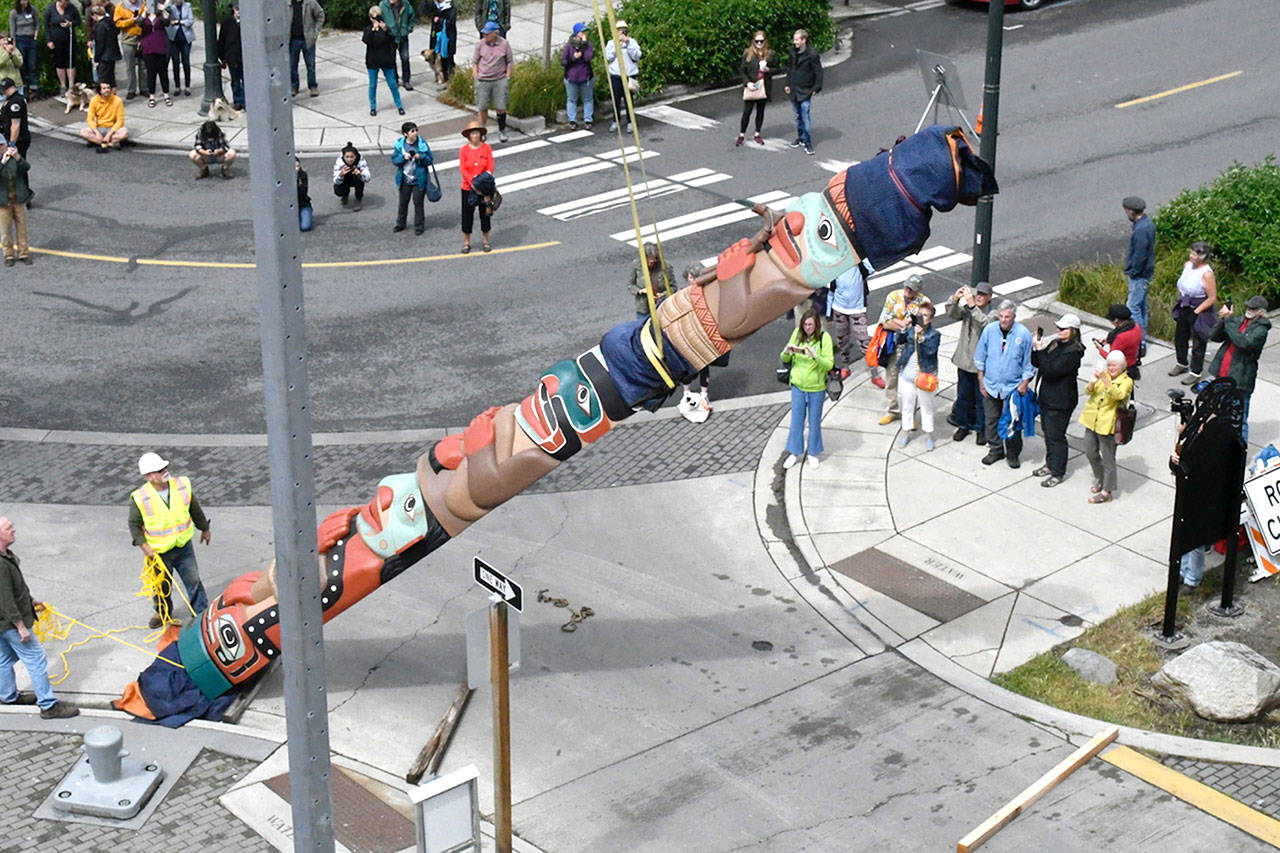PORT TOWNSEND — The Chetzemoka Trail, an interpretative trail winding through Port Townsend to celebrate the life of Chief Chetzemoka, the important places in his life and the S’Klallam people, will be dedicated Saturday.
The ceremony will be at 1 p.m. at Memorial Field, 550 Washington St.
Also on Saturday will be the dedication of a newly installed totem pole outside the Northwest Maritime Center at the corner of Water and Monroe streets.
The Chetzemoka Trail project is a partnership between the Native Connections Action Group of the Quimper Unitarian Universalist Fellowship and the Jamestown S’Klallam Tribe, with additional assistance from the community.
The trail features 18 sites throughout the city that can be divided into 3-, 6- and 12-miles loops. The 3-mile loop concentrates on the downtown historical sites. A 6-mile loop extends west to Kah Tai Lagoon and Chetzemoka’s grave site at the Laurel Grove Cemetery. The 12-mile loop extends to North Beach and Fort Worden.
The trail is intended to educate visitors about the relationship between the S’Klallam people who lived for hundreds of years in qatáy and the European settlers who arrived in the area in mid-19th century, according to the Jamestown S’Klallam website at jamestowntribe.org.
Chief Chetzemoka lived from 1808 to 1888 in the area now occupied by Port Townsend.
“The people of qatáy [Port Townsend] have been very open to learning the history of the area, and the area’s original inhabitants,” said Loni Grinnell-Greninger, a descendent of Chief Chetzemoka and the deputy director of Social and Community Services of the Jamestown S’Klallam Tribe.
“As the community walks along the new trail, they will be taken back in time as they see each destination and read each sign,” she added.
“We have found the qatáy community to be positively invested in our culture and our involvement; for this we are grateful.”
A 26-foot, 1,600-pound carved totem pole was erected Thursday morning at the maritime center.
The pole was carved from a cedar log by master carver Dale Faulstich and tribal member Timothy O’Connell, and painted by them, as well as by Tyler Faulstich and Andy Pitts.
“Port Townsend is a town of craftsmen,” Faulstich said. “In the old days, the supernatural carpenters were sent to earth to teach the craftsmen all their skills — the carpenters to build, the drummers to sing, weaving, all the arts.
“The top figure on the pole is the supernatural carpenter holding traditional tools in his hands. The middle figure is the spirit of the cedar tree because the tribes depended on the cedar tree for their livelihood. The bottom figure is Cicmehan, the S’Klallam chief who welcomed the early settlers to the Kah Tai, the traditional village.
“He thought the people would get further along by cooperating with one another rather than fighting with one another. He is there today to welcome new visitors to Port Townsend.”
Also at the maritime center is a replica of a dugout Salish Coast canoe named “Two Eagles,” which was installed in the Wooden Boat Chandlery. The boat was carved and decorated by Falustich and Andy Pitts.
It is named after two young eaglets that had fallen from their nest near Pitts’ studio and survived. They were returned to the nest and are continuing to mature. The artists both felt the eaglets were a meant to be represented on the canoe.
Grinnell-Greninger said the tribe has chosen to employ non-native allies to help implement its vision.
“While some of our carvers are non-native, we are very thankful to them for helping us express our culture in the style of art that we have chosen to adopt over the years,” she said.
“Moreover, we are proud that many tribal citizens have come through our carving shed to apprentice, and one of our tribal citizens was involved in the making of the Northwest Maritime Center totem pole from start to finish.
“Our tools have changed, but we still make our art and regalia,” she said. “Some songs have faded away, but new songs are coming back to our people; we record them so we do not lose them. Our language almost died, but it has been rekindled and revitalized through the help of non-natives, through the publishing of books, and the use of computer programs. In sum, we use the contemporary tools to carry on our traditions.
“These partnerships with non-native individuals and organizations have led to many exciting successes.”
Jake Beattie, maritime center executive director, said the art is a gift from the Jamestown S’Kallam tribe to the center.
“We’ve had a working relationship with the tribe before the building was here. During the 10 years we were raising money and coming up with the idea of the maritime center, the Jamestown were part of that conversation,” he said.
“We’ve had periodic conversations and explorations around how to better tell the whole story of the maritime traditions and past and present of our place that, for thousands of years, were the traditions of the native tribes.”
“It was kind of hard to know where the front door of the Northwest Maritime Center is,” Beattie said. “Now we know where the front door is and it’s a pass into the future.
“It’s a current expression of a full scope of a tradition that doesn’t end now. It goes on.”
________
Jefferson County Reporter Jeannie McMacken can be reached at 360-385-2335 or at jmcmacken@peninsuladailynews.com.

